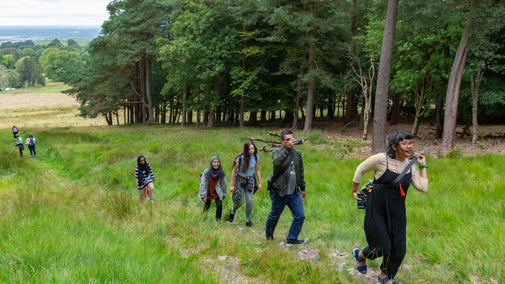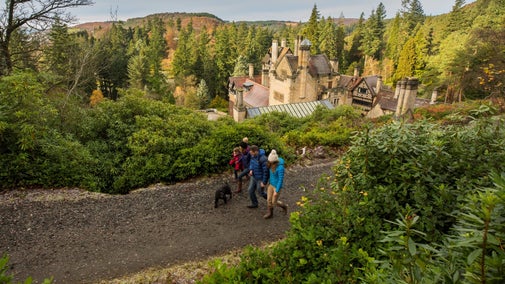Housesteads to Steel Rigg circular walk
North East
Explore Hadrian's Wall country on this 8-mile circular walk starting at Housesteads Fort. One of the richest parts of the country for Roman archaeology, this trail allows you to get close to the Wall that was built in AD 122 and appreciate the surroundings.
Start point
Housesteads visitor centre, grid ref: NY793684Trail information
Entry fees
Entry to the fort is free to National Trust and English Heritage members. There are charges for non-members.
More near here
Sycamore Gap walk
Take a circular walk starting from the visitor centre to the Roman Fort and then along the World Heritage Roman wall footpath to the iconic Sycamore Gap. Although the Sycamore tree is no longer there, the stump remains and may regrow. See great views across the countryside as you walk alongside the ancient wall in the heritage landscape.

River walk at Wallington
A short, easy walk along the River Wansbeck and around the Wallington Estate in Northumberland.

Get in touch
Our partners

We’ve partnered with Cotswold Outdoor to help everyone make the most of their time outdoors in the places we care for.
You might also be interested in
Walking
Explore some of the finest landscapes in our care on coastal paths, accessible trails, woodland walks and everything in between. Find the best places to walk near you.

Walking in the North East
Explore some of the best walking routes in North East England with the National Trust. From scenic coastal walks and historic countryside trails to family-friendly and dog-friendly paths, discover unforgettable walks across Northumberland, Tyne & Wear, and County Durham.

Top tips for hill and mountain walking
Learn about the essential clothing and equipment to take with you, keeping your energy levels up, staying safe and leaving the environment as you found it.

Staying safe at National Trust places
The special places in National Trust care sometimes come with a few risks for visitors, be it coastline or countryside. Find out how to keep safe throughout your visits.

Explore Hadrian's Wall and Housesteads Fort
Inscribed a World Heritage Site in 1987, there is plenty to explore at Hadrian’s Wall and Housesteads Fort. A historic landscape, there is lots of wildlife also to discover.

Cotswold Outdoor: our exclusive walking partner
Learn about the National Trust’s ongoing partnership with Cotswold Outdoor. Find out how they help us care for precious places and the exclusive discount available for National Trust supporters.

